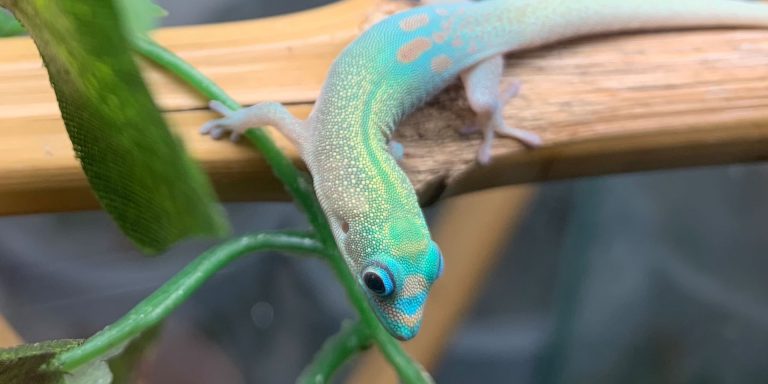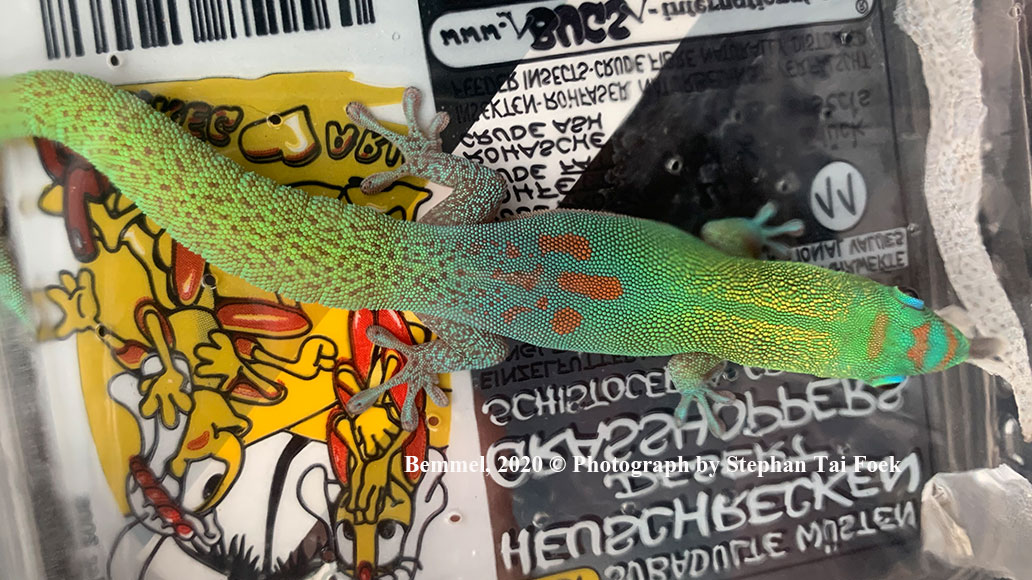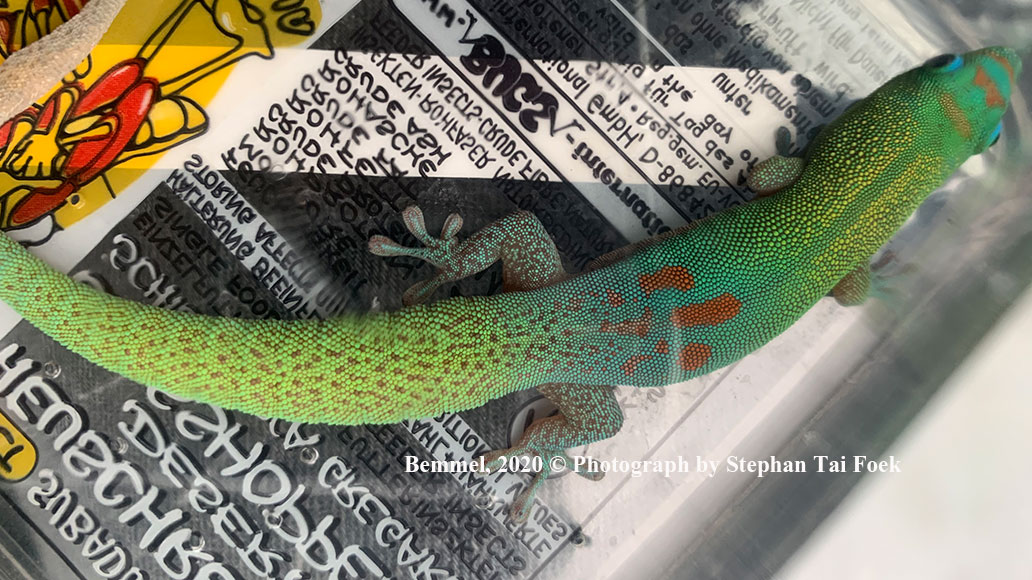Phelsuma laticauda (Blue line) English name: Golddust gekko

Caresheet
Caresheet
It lives in northern Madagascar, and on the island of Comoros; it has also been introduced to Hawaii and other Pacific islands.
The phelsuma laticauda laticauda blue line is a small phelsuma around the 15 cm. The Phelsuma laticauda laticaude got a green basic color with yellow dust colored neck and 3 red tear like spots on the back.
The blue line got a blue background instead of green.
Like the normal green laticauda also the blue Phelsuma Laticauda laticauda’s are found in the wild. The percentage of blue’s is not as high as we found in the Hawaiian phelsuma laticauda. (Hawaiian blue laticauda).
my breeding group, 4 unrelated animals from Petr Hoferica and 3 animals from David Bauda. With selecting within the group of European blue line i will try to breed the best deep red with blue back ground animals.
The phelsuma laticauda laticauda blue line is a small phelsuma around the 15 cm.
Phelsumas falls under CITES II, to own this lizard you need CITES import papers when it’s wild caught or you need for captive bred animals a certificate of origin from the breeder. You should get this when you buy the animal.
Couple Phelsuma Laticauda are housed in glass tank. 45 cm x 45 cm x 60 cm
The Phelsuma laticauda is vey territorial and only can be housed as couple. Some vertical and horizontal bamboo for hiding and climbing. Also one sanseviera in each glass tank. Lightning are placed outside the cages at top of the cage.
The light period being used is 12hrs on and 12hrs off
I use a minimal 1500 LUM Led lamp 6500 kelvin. and feeding the phelsuma laticauda twice a moth liquid D3 mixed with banana.
The temperature gradient varies between 24-26 degrees Celcius on the cool side with a basking site of 30-32 degrees Celcius.
I feed the phelsumas twice a week with crickets and once a month waxworms. All the prey items are dusted with sticky tongue farms indoor miner-all. Also once a week a commercial phelsuma food (Aves phelsuma-diet). It’s a diet powder mix I will mix this with banana and a little bit of honey. The powder mix from aves is full of nutrients including vitamin A, D3 and calcium. A bottle cap with the diet and banana honey mix will provided at the bottom near a vertical bamboo for a day. Don’t place the bottle cap with the diet near a heatsource.
I also provide the Phelsumas every day with spraying water directly on the leaves, on the glass walls and sanseviera. They like to drink the water from the surface.
They are able to reproduce when they are fully mature which occurs 9-12 months after they hatch. Better is to wait 18 months. They will lay 2 eggs every 3-4 weeks between leaves or in the bamboo. Babys should not be with adult because canabalism is not uncommon and the parents will eat the baby’s. i will incubate the eggs in the same terrarium as the parents only in a small plastic transparant box with lid.
Make sure that you mark the top of the egg and secure the, so it won’t turn in box. I mark the top of the eggs with a black waterproof marker.
Baby Phelsuma’s will have the same diet with every day banana. I spray every day with water on the glass and on the leafes so the bays have enough to drink. Twice a week crickets dusted with vitamins.
Temperatur between 25-30°C. Not have UV but high light output, minimum 1500 lumen led light with 6500 kelvin, 12 hours in day. Twice a month they get some liquid D3 with the banana.
All the baby’s are kept seperate in a own housing, because they are very territorial.
15x15x25 cm height with a few bamboo sticks with some artificial leafs.
Collection
Phelsuma laticauda (Blue line) Collection



